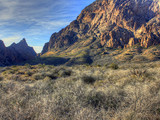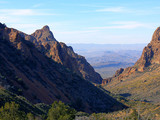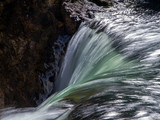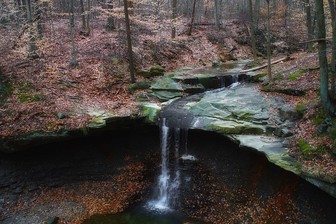Government Grants
Business Grants
Home Owner Programs
Federal Programs
About Us
Identify Factors Driving Clostridium botulinum Activities in Sleeping Bear Dunes National Lakeshore Coastal Ecosystems
BACKGROUND AND OBJECTIVES This Cooperative Agreement P18AC00009 is entered into by the U. S. Department of the Interior, National Park Service (NPS), and the Regents of the University of Michigan (Recipient).
Sleeping Bear Dunes National Lakeshore (SLBE) has suffered from repeated outbreaks
of type E botulism since 200 6. Over the last decade the NPS and a team of agency and academic partners have committed significant resources toward monitoring bird mortality and nearshore ecosystem processes, identifying bird foraging patterns and diets, mapping food web pathways, understanding outbreak epidemiology, and communicating risks to park visitors and local communities.
However, the underlying drivers of botulism toxin production have remained elusive due to limitations in the available tools and approaches for investigating the responsible microbe, Clostridium botulinum.
This agreement aims to apply new microbiological tools and experimental approaches to understand what drives growth of the botulism bacterium and production of the botulinum toxin.
Broadly, NPS and UM will seek to:
1) Develop a collaborative research program addressing microbiological issues of concern, particularly outbreaks of type E botulism.
2) Provide opportunities for student training and engagement in field research in national parks.
3) Develop NPS technical and analytical capacity for addressing type E botulism issues at SLBE.
STATEMENT OF WORK Task 1:
Establish DNA and RNA-based assays Previous work at SLBE utilized a quantitative PCR assay to detect the presence and abundance of the gene encoding the botulinum neurotoxin BoNT.
While this allowed quantification of the gene in various matrices (sediment, mussels, tissue, Cladophora), it was not able to discriminate between cases where the gene was actively expressed, which would indicate toxin production, versus when it was not.
We will further develop this assay to use RNA (gene expression) in addition to DNA (gene presence) as the starting material by establishing a reverse transcription quantitative PCR assay.
DNA-based work will continue as well, as this allows normalization of gene expression levels to gene abundance, allowing comparisons between samples to help identify environmental conditions that lead to increased expression the gene.
Samples for assay development will be collected in the fall of 2017 as part of a UM field microbiology course led by Dr. Melissa Duhaime and during ongoing nearshore sampling by UW-Milwaukee research partner Dr. Harvey Bootsma.
Task 2:
Conduct laboratory experiments at UM Samples from Dr. Duhaime’s field course will be used to implement laboratory experiments addressing the effects of nutrient and temperature treatments on the growth and activity of toxin-producing Clostridium botulinum.
In addition to environmental parameters, microbial community composition will be assessed to explore whether biological interactions between microbial community members may impact toxin production levels.
Task 3:
Conduct field experiments at SLBE Field experiments will be developed to test specific hypotheses about Clostridium botulinum gene abundance and gene expression.
One experiment will be built upon an ongoing experiment at SLBE’s Good Harbor reef site, involving removal of dreissenid mussels.
From this site, mixed biological samples will be collected by scraping materials from rocks and preserving for DNA and RNA extraction.
A subset of samples will be separated by class (e.g., mussels, invertebrates, Cladophora, etc.) for similar analyses.
Additionally, water samples will be collected 1 m above the lake bottom for later DNA/RNA analysis.
Additional experiments, potentially addressing beach habitats relevant to SLBE’s Federally Endangered Piping Plover population, will also be conducted as time and funds permit.
Task 4:
Seek precursors and indicators of toxin gene expression From a management perspective, it is desirable to identify early warning signs of an impending botulism outbreak so that actions can be taken to mitigate toxin exposure and reduce wildlife impacts.
Recent research successfully identified microbial indicators of impending harmful algal blooms, providing hope that such indicators may also be found for botulism.
To help identify such early warning signs, samples will be collected frequently (approximately weekly) from SLBE beach sites currently monitored for recreational health purposes.
Sediment and Cladophora samples from nearshore Cladphora depositional areas will be collected regularly as well.
Samples will be analyzed to determine whether other members of the microbial community can be used to predict imminent increases in expression of the botulinum toxin gene and avian botulism outbreaks.
Task 5. Assist SLBE in developing in-house capacity for analysis of Clostridium botulinum or other botulism indicators.
SLBE has a newly refurbished microbiological laboratory for analysis of traditional beach bacteria samples, and maintains qPCR machine capable of some of the botulism-related analyses proposed by Dr. Denef.
In order to build in-house capacity for addressing SLBE botulism issues, Dr. Denef’s team will provide training to SLBE staff in the processing and analysis of field samples for Clostrididium botulinum or other microbial indicators of botulism.
RECIPIENT AGREES TO:
1) Establish DNA- and RNA-based assays for the Clostridium botulinum gene and gene expression.
2) Conduct laboratory experiments at UM to determine factors driving Clostridium botulinum gene expression.
3) Conduct field experiments at SLBE to determine factors driving Clostridium botulinum gene expression, including the ongoing dreissenid mussel removal experiment at Good Harbor.
4) Seek precursors and indicators of toxin gene expression within the bacterial community.
5) Assist SLBE in developing in-house capacity for analysis of Clostridium botulinum or other botulism indicators.
NATIONAL PARK SERVICE AGREES TO:
1) Assist the recipient in developing the scope and activities to be accomplished, including providing technical assistance during field activities, conceptual support, and coordination with broader project activities.
2) Provide orientation to park resources, assist with site selection, conduct or assist with sample collection, and orient the recipients to on-site laboratory facilities and safety precautions.
3) Provide the programmatic structure of the project, provide special interpretive programs, and provide educational elements, integrating the recipient’s work with the broader research and outreach effort.
The Recipient and NPS, jointly, agree to:
1) Communicate frequently during project planning and implementation.
2) Share respective datasets as they become available.
3) Collaborate on related data analysis, interpretation, and reporting.
4) Develop project outreach materials and programs.
Sleeping Bear Dunes National Lakeshore (SLBE) has suffered from repeated outbreaks
of type E botulism since 200 6. Over the last decade the NPS and a team of agency and academic partners have committed significant resources toward monitoring bird mortality and nearshore ecosystem processes, identifying bird foraging patterns and diets, mapping food web pathways, understanding outbreak epidemiology, and communicating risks to park visitors and local communities.
However, the underlying drivers of botulism toxin production have remained elusive due to limitations in the available tools and approaches for investigating the responsible microbe, Clostridium botulinum.
This agreement aims to apply new microbiological tools and experimental approaches to understand what drives growth of the botulism bacterium and production of the botulinum toxin.
Broadly, NPS and UM will seek to:
1) Develop a collaborative research program addressing microbiological issues of concern, particularly outbreaks of type E botulism.
2) Provide opportunities for student training and engagement in field research in national parks.
3) Develop NPS technical and analytical capacity for addressing type E botulism issues at SLBE.
STATEMENT OF WORK Task 1:
Establish DNA and RNA-based assays Previous work at SLBE utilized a quantitative PCR assay to detect the presence and abundance of the gene encoding the botulinum neurotoxin BoNT.
While this allowed quantification of the gene in various matrices (sediment, mussels, tissue, Cladophora), it was not able to discriminate between cases where the gene was actively expressed, which would indicate toxin production, versus when it was not.
We will further develop this assay to use RNA (gene expression) in addition to DNA (gene presence) as the starting material by establishing a reverse transcription quantitative PCR assay.
DNA-based work will continue as well, as this allows normalization of gene expression levels to gene abundance, allowing comparisons between samples to help identify environmental conditions that lead to increased expression the gene.
Samples for assay development will be collected in the fall of 2017 as part of a UM field microbiology course led by Dr. Melissa Duhaime and during ongoing nearshore sampling by UW-Milwaukee research partner Dr. Harvey Bootsma.
Task 2:
Conduct laboratory experiments at UM Samples from Dr. Duhaime’s field course will be used to implement laboratory experiments addressing the effects of nutrient and temperature treatments on the growth and activity of toxin-producing Clostridium botulinum.
In addition to environmental parameters, microbial community composition will be assessed to explore whether biological interactions between microbial community members may impact toxin production levels.
Task 3:
Conduct field experiments at SLBE Field experiments will be developed to test specific hypotheses about Clostridium botulinum gene abundance and gene expression.
One experiment will be built upon an ongoing experiment at SLBE’s Good Harbor reef site, involving removal of dreissenid mussels.
From this site, mixed biological samples will be collected by scraping materials from rocks and preserving for DNA and RNA extraction.
A subset of samples will be separated by class (e.g., mussels, invertebrates, Cladophora, etc.) for similar analyses.
Additionally, water samples will be collected 1 m above the lake bottom for later DNA/RNA analysis.
Additional experiments, potentially addressing beach habitats relevant to SLBE’s Federally Endangered Piping Plover population, will also be conducted as time and funds permit.
Task 4:
Seek precursors and indicators of toxin gene expression From a management perspective, it is desirable to identify early warning signs of an impending botulism outbreak so that actions can be taken to mitigate toxin exposure and reduce wildlife impacts.
Recent research successfully identified microbial indicators of impending harmful algal blooms, providing hope that such indicators may also be found for botulism.
To help identify such early warning signs, samples will be collected frequently (approximately weekly) from SLBE beach sites currently monitored for recreational health purposes.
Sediment and Cladophora samples from nearshore Cladphora depositional areas will be collected regularly as well.
Samples will be analyzed to determine whether other members of the microbial community can be used to predict imminent increases in expression of the botulinum toxin gene and avian botulism outbreaks.
Task 5. Assist SLBE in developing in-house capacity for analysis of Clostridium botulinum or other botulism indicators.
SLBE has a newly refurbished microbiological laboratory for analysis of traditional beach bacteria samples, and maintains qPCR machine capable of some of the botulism-related analyses proposed by Dr. Denef.
In order to build in-house capacity for addressing SLBE botulism issues, Dr. Denef’s team will provide training to SLBE staff in the processing and analysis of field samples for Clostrididium botulinum or other microbial indicators of botulism.
RECIPIENT AGREES TO:
1) Establish DNA- and RNA-based assays for the Clostridium botulinum gene and gene expression.
2) Conduct laboratory experiments at UM to determine factors driving Clostridium botulinum gene expression.
3) Conduct field experiments at SLBE to determine factors driving Clostridium botulinum gene expression, including the ongoing dreissenid mussel removal experiment at Good Harbor.
4) Seek precursors and indicators of toxin gene expression within the bacterial community.
5) Assist SLBE in developing in-house capacity for analysis of Clostridium botulinum or other botulism indicators.
NATIONAL PARK SERVICE AGREES TO:
1) Assist the recipient in developing the scope and activities to be accomplished, including providing technical assistance during field activities, conceptual support, and coordination with broader project activities.
2) Provide orientation to park resources, assist with site selection, conduct or assist with sample collection, and orient the recipients to on-site laboratory facilities and safety precautions.
3) Provide the programmatic structure of the project, provide special interpretive programs, and provide educational elements, integrating the recipient’s work with the broader research and outreach effort.
The Recipient and NPS, jointly, agree to:
1) Communicate frequently during project planning and implementation.
2) Share respective datasets as they become available.
3) Collaborate on related data analysis, interpretation, and reporting.
4) Develop project outreach materials and programs.
Who's Eligible
Relevant Nonprofit Program Categories
Obtain Full Opportunity Text:
Locomotive Emissions Measurement for Various Blends of Biodiesel Fuel
Additional Information of Eligibility:
THIS IS NOT A REQUEST FOR APPLICATIONS- This announcement is to provide public notice of the National Park Service's intention to award financial assistance for the following project activities without competition.
University of Michigan- THIS IS NOT A REQUEST FOR APPLICATIONS
Full Opportunity Web Address:
https://www.grantsolutions.gov/gs/preaward/previewPublicAnnouncement.do?id=12623
Contact:
Agency Email Description:
noel_miller@nps.gov
Agency Email:
Date Posted:
2017-10-19
Application Due Date:
Archive Date:
2017-12-02
Social Entrepreneurship
Spotlight
Building a Million Dollar Company Where Everyone Counts

Ganesh Natarajan is the Founder and Chairman of 5FWorld, a new platform for funding and developing start-ups, social enterprises and the skills eco-system in India. In the past two decades, he has built two of India’s high-growth software services companies – Aptech and Zensar – almost from scratch to global success.





